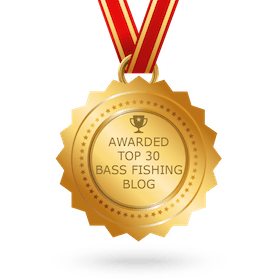Here’s everything you ever wanted to know about life jackets.

DSC_5027 Photo Courtesy of The U.S. Coast Guard.
There’s no excuse not to wear a lifejacket on the water!
Boaters enjoy the feel of sun and spray. So it’s tempting to boat without wearing a lifejacket, especially on nice days. But most boating-related drownings happen on nice days.
Lifejackets are available in a wide variety of shapes, colors, and sizes. Many are thin and flexible. Some are built right into fishing vests or hunter coats. Others are inflatable as compact as a scarf or fanny pack until they hit the water when they automatically fill with air.
How to Choose the Right Life Jacket Brochure – PDF
 Things to Know:
Things to Know:
- The best life jacket is the one you will wear.
- Certain lifejackets are designed to keep your head above water and help you remain in a position that permits proper breathing.
- Some styles of lifejackets are not intended for weak or non-swimmers (read the label and be honest).
- To meet U.S. Coast Guard requirements, a recreational vessel must have a U.S. Coast Guard Approved lifejacket for each person aboard.
- Lifejacket wear regulations for children may vary by state.
- Adult-sized lifejackets may not work for children. Child-size lifejackets are available.
- When worn correctly a foam-filled lifejacket will fit snugly, and will not allow the lifejacket to rise above the wearer’s chin or ears.
- Foam-filled lifejackets should be tested for wear and buoyancy at least once a year. Waterlogged, faded, or otherwise damaged lifejackets should be discarded.
- Inflatable lifejackets should be maintained per the manufacturer’s instructions.
- Most adults only need 7 to 12 pounds of buoyancy (31 to 53 Newton) to keep their heads above water.
How Do Lifejackets Save Lives?
- By providing buoyancy if you unexpectedly find yourself in the water.
- By providing buoyancy if you purposely jump into the water to save someone else.
- By providing buoyancy when you are no longer able to keep yourself afloat due to fatigue, injury, or cold.
- By providing buoyancy if you are a weak or non-swimmer.
Lifejackets must be:
- the appropriate size for the intended user,
- appropriate for the intended activity,
- in good and serviceable condition, and
- Coast Guard approved to meet carriage requirements.
Size and Fit:
- Check the label for user weight and chest size.
- Different body types float differently.
- Try your lifejacket on in the water to ensure your airway is clear.
- A good fit is secure, comfortable, and adjustable.
Accessibility:
- Though not always required by law, a lifejacket should be worn at all times when the vessel is underway. A wearable lifejacket can save your life, but only when you wear it.
- Wearable lifejackets must be readily accessible.
- You must be able to put your lifejacket on in a reasonable amount of time in an emergency (vessel sinking, on fire, etc.).
- Lifejackets should not be stowed in plastic bags, in locked or closed compartments, or have other gear stowed on top of them.
- Throwable devices must be immediately available for use.
Inflatable Lifejackets:
- Inflatable lifejackets may be more comfortable to wear.
- Inflatable lifejackets require the user to pay careful attention to the condition of the device.
- Inflatable lifejackets must have a full cylinder and all status indicators on the inflator must be green, or the device is NOT serviceable and does NOT satisfy the requirement to carry lifejackets.
- Inflatable lifejackets are not appropriate for weak or non-swimmers.
Child Lifejacket Requirements:
- Federal law requires that when a vessel is underway, children under 13 years of age must wear their lifejacket.
- exceptions for when below deck or within an enclosed cabin.
- State laws may vary. Check with your state boating safety officials.
The Coast Guard recommends and many states require wearing lifejackets:
- For water skiing and other towed activities (use a lifejacket marked for water skiing).
- While operating personal watercraft (PWC) (use a lifejacket marked for water skiing or PWC use).
- During white water boating activities.
- While sailboarding (under Federal law, sailboards are not “boats”).
If you are boating in an area under the jurisdiction of the Army Corps of Engineers, or a federal, state, or local park authority, other rules may apply.
Personal Flotation Device (PFD) Design:
There are four basic design types: Inherent, Inflatable, Hybrid, and Special Purpose.

DSC_4507 Photo Courtesy of The U.S. Coast Guard.
There are two main classes of PFDs.
- Those which provide face-up in-water support to the user regardless of physical conditions (lifejackets).
- Those which require the user to make swimming and other postural movements to position the user with the face out of the water (buoyancy aid).
Wearable PFDs are categorized by performance Type and/or performance level.
- Type I, II, III, V
- Level 50, 70, 100, 150
The number in performance Level Devices (Level 70) indicates the minimum buoyancy of the device. The buoyancy of Level Devices is measured in Newton (N). 70 Newtons equal 15.74 pounds of buoyancy.
Performance Type Devices:
- Type I – has the greatest required inherent buoyancy and turns most unconscious persons in the water from a face-down position to a vertical and slightly backward position, therefore, greatly increasing one’s chance of survival.
- Type II – intended to turn some unconscious persons from a face-down position in the water to a position where the wearer’s respiration is not impeded.
- Type III – intended to support a conscious person in the water in an upright position. This type of device is not required to turn an unconscious person in the water from a face-down position to a position where the wearer’s respiration is not impeded.
- Type V – is approved for restricted uses or activities such as boardsailing, or commercial white water rafting. These devices may not be suitable for other boating activities. The label indicates whether a particular design of Type V can be used in a specific application, what restrictions or limitations apply, and its performance type.
Performance Level Devices:
- Level 50 – intended for use by those who are competent swimmers and who are near to bank or shore, or who have help and a means of rescue close at hand.
- Level 70 – intended for use by those who have help or a means of rescues close at hand, or who are near bank or shore. These devices have minimal bulk, but cannot be expected to keep the user safe for a long period of time in disturbed water.
- Level 100 – intended or those who may have to wait for rescues, but are likely to do so in sheltered water. The device should not be used in rough water.
- Level 150 – intended for general application or for use with foul-weather clothing. It will turn an unconscious person into a safe position and requires no subsequent action by the user to maintain this position.
- Level 275 – intended primarily for offshore use under extreme conditions.
Lifejackets are separated into four broad categories based on weight:
- Adult – users with a weight greater than 88 lbs.
- Youth – users with a weight over 55 lbs. and less than or equal to 88 lbs.
- Child – users with a weight over 33 lbs. and less than or equal to 55 lbs.
- Infant – users with a weight less than or equal to 33 lbs.
Inherent – built-in flotation (always buoyant)
- Adult, Youth, Child, and Infant sizes
- For swimmers & non-swimmers
- Wearable & throwable styles
- Some designed for water sports
- usually filled with foam

There’s no excuse not to wear a lifejacket on the water!
SOURCE – U.S.COAST GUARD
![]()














